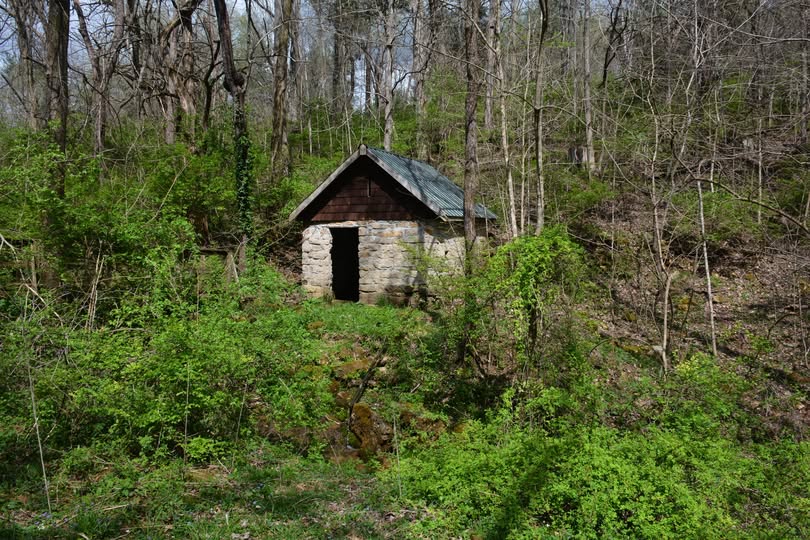

Saint Thomas Farm and Church Springhouse
A few months back, I posted some info and a winter photo of the spring at Saint Thomas. But springtime does it more justice—don’t you think?
Yesterday, I took a couple from Northern Kentucky on a short tour. We stopped by Saint Rose Priory, Saint Charles, the Loretto Motherhouse, Holy Cross, and wrapped up at the Saint Thomas Farm and Church. They told me that of all the places we visited, the springhouse is what spoke to him the most. That says a lot. If you’re interested in more details about the springhouse that I’m sharing today, this post from a few months ago has got you covered
The springhouse at Saint Thomas actually predates the church itself. It was one of the key reasons the Howard family chose to settle and farm here in the early 1800s. The spring provided a dependable, clean water source in an era when such things meant survival. The Howards welcomed early missionary priests, who often stayed on the farm, and the spring became a gathering place not only for daily use but also for community.
The stone springhouse, built over the flowing water to keep it cool and clean, was a mark of permanence and faith in the land. Its solid construction and peaceful setting make it feel almost sacred. Over time, the spring supported a growing Catholic presence in the region, eventually becoming part of the story of Saint Thomas Church and the surrounding Holy Land.
Today, the springhouse still stands, moss-covered and shaded by trees, offering something deeper than just a drink.
